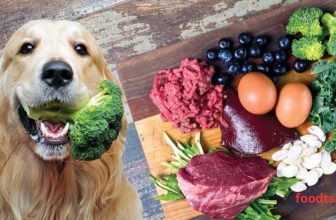Chicken and Rice Dog Food for Strong, Healthy Dogs

Imagine watching your furry friend wag their tail in excitement every mealtime. You want the best for your dog, and choosing the right food is a big part of that.
“Chicken and Rice Dog Food” might just be the answer you’ve been searching for. This popular combination is not only delicious for your canine companion but also packed with nutrients essential for their health. You’ll discover why chicken and rice make a winning duo in your dog’s diet and how it can lead to a happier, healthier pet.
Stick around to find out why this simple meal could make all the difference in your dog’s life.
Benefits Of Chicken And Rice
Chicken and rice dog food is a popular choice among pet owners. It offers a balance of nutrients essential for your dog’s health. This combination provides proteins, carbohydrates, and other vital elements. Many dogs enjoy the taste, making it a favorite meal. The benefits of chicken and rice for dogs are numerous. It supports their overall health and well-being.
Nutritional Value
Chicken and rice dog food is rich in essential nutrients. Chicken is an excellent source of high-quality protein. Protein helps in building and repairing tissues. It also supports the immune system and provides energy. Rice is a great source of carbohydrates. Carbohydrates are crucial for energy and vitality. Together, they provide a balanced diet for dogs.
Here are some key nutritional benefits:
- High protein for muscle development.
- Carbohydrates for sustained energy.
- Vitamins and minerals for overall health.
Chicken also contains omega-6 fatty acids. These are important for skin and coat health. Rice is often enriched with vitamins like B-complex. These support metabolism and brain function. Together, they form a nutritious meal. Perfect for maintaining a healthy dog.
Easily Digestible
Chicken and rice are gentle on the stomach. Dogs with sensitive stomachs benefit from this combination. Chicken is low in fat and easy to digest. It provides essential nutrients without causing discomfort. Rice is bland and soothing for the digestive system. It helps in firming up stools and reducing diarrhea.
Reasons why this food is easily digestible:
- Simple ingredients reduce digestive stress.
- Low fat content prevents upset stomachs.
- Plain rice aids in digestion.
This meal is often recommended by vets. Especially for dogs recovering from illness. It provides nutrition without taxing the digestive system. Your dog can enjoy their meal comfortably. Without the risk of digestive issues.
Weight Management
Maintaining a healthy weight is vital for dogs. Chicken and rice can help achieve this. Chicken is lean and provides necessary protein. It helps in maintaining muscle mass. Rice offers energy without excessive calories. This combination aids in weight control.
Here’s how it helps in weight management:
- Balanced nutrients support a healthy weight.
- Lean proteins build and maintain muscles.
- Moderate carbs prevent weight gain.
This food is ideal for dogs needing weight management. It fills them up without overloading on calories. Ensuring they stay active and healthy. A perfect choice for dogs prone to weight issues.
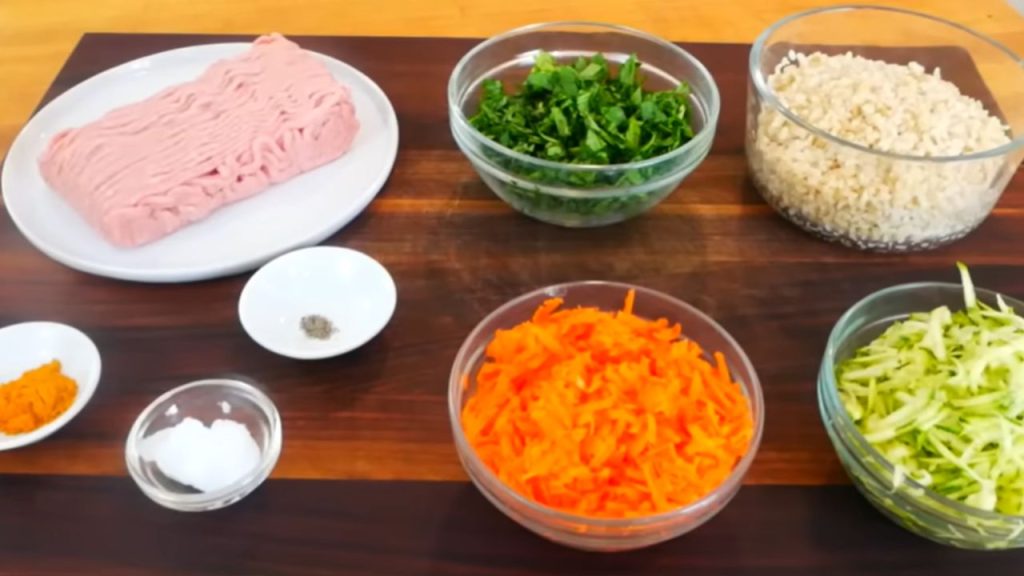
Ingredients Breakdown
Chicken and rice dog food is a popular choice for many pet owners. It’s known for its simple ingredients and nutritional benefits. The key to understanding this type of dog food lies in the ingredients breakdown. Knowing what’s inside helps ensure your furry friend gets the best nutrition possible. This article will explore the quality of chicken sources, various rice types, and other supplementary ingredients commonly found in chicken and rice dog food.
Quality Chicken Sources
Chicken is a primary ingredient in this type of dog food. Not all chicken sources are equal. Quality matters a lot. Here are some important aspects:
- Free-range chicken: Chickens that roam freely tend to be healthier. Their meat is often leaner.
- Organic chicken: Raised without antibiotics and hormones. Provides cleaner meat.
- Chicken meal: This is a concentrated form of chicken. It contains more protein than fresh chicken.
Understanding these sources helps you choose the right dog food. Opt for options that prioritize quality chicken. This ensures better nutrition for your pet.
Rice Varieties
Rice is a staple in chicken and rice dog food. Different types of rice offer various benefits:
| Rice Type | Benefits |
|---|---|
| Brown rice | Rich in fiber, supports digestion. |
| White rice | Easy to digest, ideal for sensitive stomachs. |
| Wild rice | High in protein, it adds nutritional variety. |
Choosing the right rice is crucial. It affects the overall health benefits of the dog food.
Supplementary Ingredients
Beyond chicken and rice, other ingredients enhance the nutritional profile. Some common ones include:
- Vegetables: Carrots, peas, and sweet potatoes add vitamins and minerals.
- Fats: Fish oil and chicken fat provide essential fatty acids.
- Vitamins and minerals: Added to boost health and vitality.
These ingredients make the food complete. They support overall health and well-being. Look for dog food that includes these supplementary ingredients for balanced nutrition.
Homemade Recipes
Chicken and rice are a popular choice for dog food. Many pet owners prefer homemade recipes because they know what’s going into their dogs’ meals. Homemade dog food can be healthier and more tailored to a dog’s specific needs. Chicken and rice offer a balance of protein and carbohydrates. This makes it a simple yet effective meal. Preparing food at home also means you can adjust the ingredients easily. This is helpful if your dog has allergies or dietary restrictions. Let’s explore some easy recipes and nutritional tips.
Simple Chicken And Rice
Crafting a basic chicken and rice dish for your dog is straightforward. All you need are a few ingredients and a bit of time. Here’s how you can prepare it:
- Ingredients: 1 cup of rice, 2 chicken breasts, and water.
- Steps:
- Boil the chicken breasts until cooked. Remove and shred.
- Cook the rice according to the package instructions.
- Mix the shredded chicken with the rice.
- Let it cool before serving it to your dog.
Chicken provides essential proteins. Rice offers carbohydrates for energy. This meal is easy to digest. It’s perfect for dogs with sensitive stomachs. Make sure to consult your vet about portion sizes.
Add-ins For Nutrition
Enhancing your dog’s meal with nutritious add-ins is beneficial. Consider these options to boost the meal’s nutritional value:
- Vegetables: Add peas or carrots for vitamins and fiber.
- Oils: Drizzle a bit of olive oil for healthy fats.
- Supplements: Include fish oil for omega-3 fatty acids.
- Eggs: A Great source of protein and vitamin D.
Each add-in provides different benefits. Vegetables help with digestion. Oils and supplements support skin and coat health. Always check with your vet before introducing new elements to the diet. Small changes can make a big difference in your dog’s health.
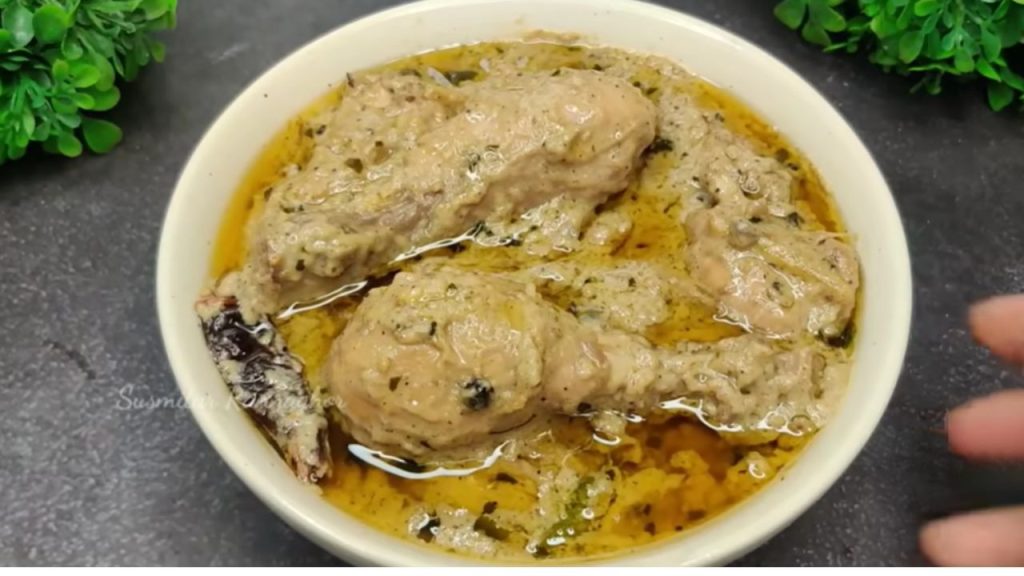
Batch Cooking Tips
Cooking in large quantities saves time and effort. Batch cooking is ideal for busy pet owners. Here are some tips for successful batch cooking:
- Plan: Decide how much food you’ll need for a week.
- Use a big pot: Cook larger portions at once to save time.
- Storage: Divide into portions and store in airtight containers.
- Freezing: Freeze portions for a longer shelf life.
Batch cooking ensures you always have food ready. It reduces daily cooking stress. Proper storage keeps food fresh and safe. Make sure to label containers with dates. This helps in tracking freshness and avoiding spoilage.
Commercial Options
Chicken and rice dog food is a popular choice among pet owners. It offers a balanced diet that is gentle on the stomach. Many commercial options are available, catering to various needs and preferences. These products are formulated to provide essential nutrients, making them suitable for dogs of all ages. This guide will explore top brands, ingredient quality, and price comparisons to help you make an informed decision.
Top Brands
Several brands stand out in the chicken and rice dog food market. These brands are known for their quality and trustworthiness. Here are a few top choices:
- Purina Pro Plan: Offers balanced nutrition with high-quality ingredients.
- Hill’s Science Diet: Known for its scientific approach and health benefits.
- Blue Buffalo: Features natural ingredients and no artificial preservatives.
- Royal Canin: Provides tailored nutrition for specific breeds and sizes.
Each of these brands has its unique features. They cater to different dietary needs and preferences. Choosing the right brand depends on your dog’s health and taste.
Ingredient Quality
The quality of ingredients in dog food is crucial. It impacts your dog’s health and well-being. High-quality ingredients ensure optimal nutrition. Here are some elements to look for:
| Ingredient | Benefits |
|---|---|
| Real Chicken | Provides protein and essential amino acids. |
| Whole Grain Rice | Offers energy and aids digestion. |
| Vegetables | Rich in vitamins and minerals. |
| Omega Fatty Acids | Supports healthy skin and coat. |
Avoid dog foods with artificial additives or fillers. These can cause allergies or digestive issues. Always check the ingredient list carefully.
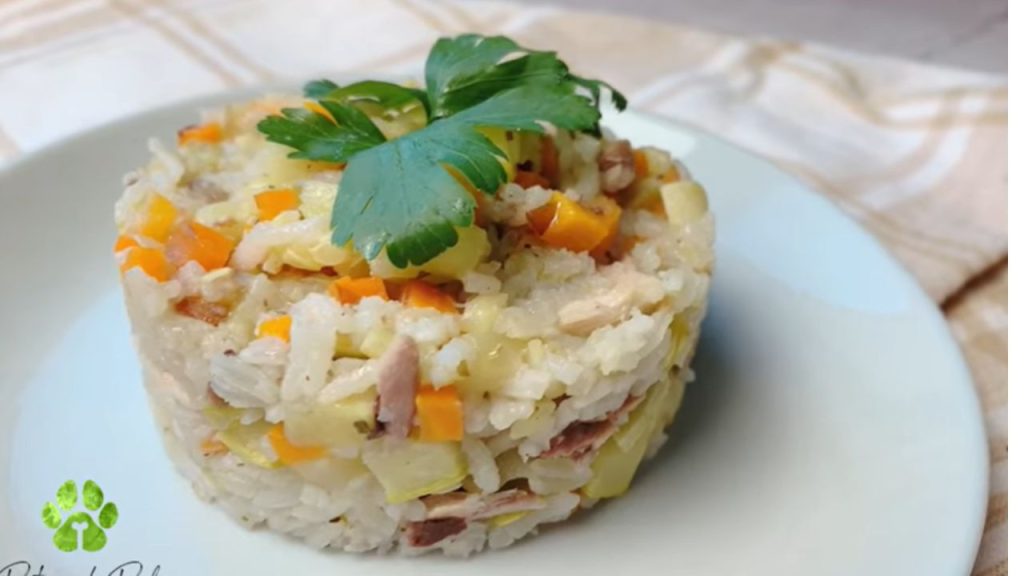
Price Comparison
Prices for chicken and rice dog food vary widely. They depend on the brand, ingredients, and packaging. Here’s a basic comparison:
- Purina Pro Plan: Approximately $40 for a 30-pound bag.
- Hill’s Science Diet: Roughly $45 for a similar size.
- Blue Buffalo: Costs around $50 for a 30-pound bag.
- Royal Canin: Priced at about $55 for the same weight.
Higher prices often reflect better ingredient quality. But always consider your budget and your dog’s needs. Sometimes, mid-range options offer the best value.
Feeding Guidelines
Chicken and rice dog food is a popular choice among pet owners. It’s known for being gentle on the stomach and highly nutritious. This type of food provides essential proteins and carbohydrates, keeping dogs healthy and active. Understanding the feeding guidelines can enhance the benefits of this diet for your furry friend. Knowing how much to feed, how to transition, and how often to feed are all crucial aspects. These guidelines ensure your dog receives the right nutrients without overfeeding or underfeeding.
Portion Sizes
Determining the correct portion size is essential for your dog’s health. Factors such as weight, age, and activity level influence the amount needed. For adult dogs, standard serving sizes can vary. Here are some general guidelines:
- Small breeds (up to 20 lbs): 1/2 to 1 cup per day.
- Medium breeds (21-50 lbs): 1 to 2 cups per day.
- Large breeds (51-100 lbs): 2 to 3 cups per day.
Always adjust portions based on your dog’s energy levels. Active dogs may need more food than sedentary ones. Consult a vet for personalized advice. Overfeeding can lead to obesity, while underfeeding may result in malnutrition. Observe your dog’s body condition and appetite regularly.
Transitioning To New Food
Switching your dog’s food requires careful planning. Sudden changes can upset their stomach. Gradually introduce chicken and rice dog food over several days:
| Days | Old Food | New Food |
|---|---|---|
| 1-3 | 75% | 25% |
| 4-6 | 50% | 50% |
| 7-9 | 25% | 75% |
| 10+ | 0% | 100% |
Monitor your dog for any adverse reactions. Look out for signs of digestive distress. If issues arise, slow down the transition process. Patience is key to a smooth switch. This method helps your dog adapt without stress.
Frequency Of Feeding
Establishing a feeding schedule benefits both you and your dog. Most adult dogs thrive on two meals a day. Puppies need more frequent feedings:
- Puppies: 3-4 meals daily.
- Adults: Eat meals daily.
- Senior dogs: 2 smaller meals daily.
Consistency is important. Feed your dog at the same time each day. This routine helps with digestion and behavior. Avoid free-feeding as it can lead to weight gain. Regular mealtimes create a sense of security for your pet. Adjust the schedule if your dog has special dietary needs.
Common Health Issues
Chicken and rice dog food is a popular choice among pet owners. This combination is known for being gentle on the stomach and providing balanced nutrition. Yet, even with its benefits, some health issues can arise. Understanding these issues is crucial for your dog’s well-being. By addressing common concerns, you can ensure a happy and healthy life for your furry friend.
Allergies And Sensitivities
Dogs can be sensitive to certain ingredients in their food. Chicken and rice dog food may cause allergies in some pets. Symptoms can include itching, skin rashes, and ear infections. These are signs your dog might be allergic. To help manage this, consider the following:
- Switch to a different protein like lamb or fish.
- Use hypoallergenic dog food designed for sensitive dogs.
- Consult a vet for allergy testing and personalized advice.
Monitoring your dog’s reaction to food is essential. If you notice any unusual behavior, it’s time to rethink their diet. Your vet can guide you to the best food choice.
Digestive Problems
Chicken and rice are often recommended for dogs with upset stomachs. Yet, it’s not a cure-all. Digestive problems can still occur. Symptoms include vomiting, diarrhea, and gas. These can make your dog uncomfortable. Here are some ways to address digestive issues:
- Introduce probiotics to support gut health.
- Ensure proper hydration to prevent constipation.
- Feed smaller, more frequent meals to ease digestion.
Keeping track of your dog’s digestion is important. Changes in their stool or appetite might indicate a problem. Regular vet check-ups can help catch issues early.
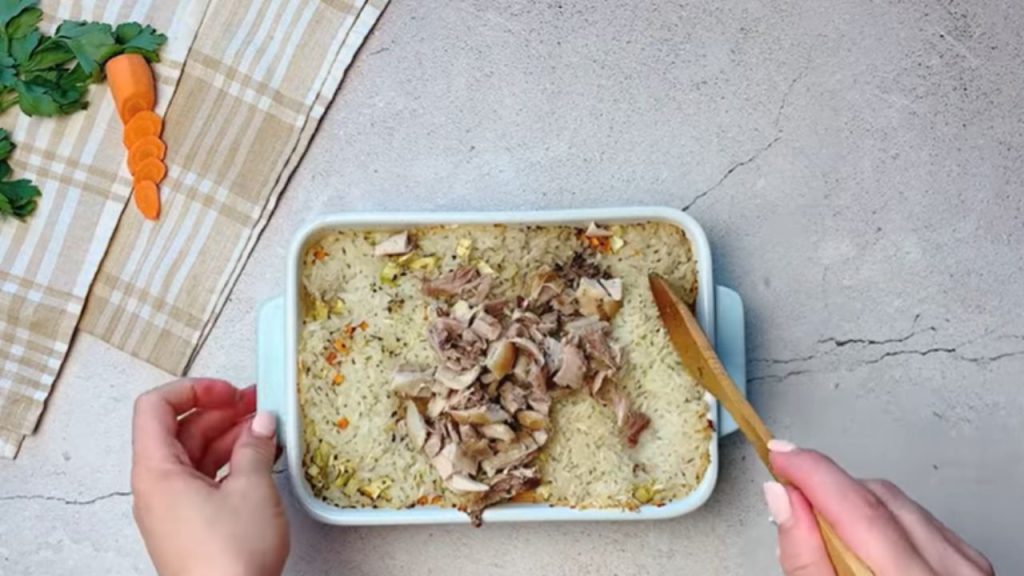
Weight Concerns
Maintaining a healthy weight is vital for your dog’s health. Chicken and rice can be high in calories. Weight concerns may arise if your dog consumes too much. Overweight dogs face risks like joint problems and heart disease. To manage your dog’s weight, consider:
- Measure portions to avoid overfeeding.
- Increase exercise to burn off excess calories.
- Use weight management dog food for balanced nutrition.
Tracking your dog’s weight helps prevent obesity. Regular weigh-ins and adjustments to their diet are key. Your vet can provide guidance tailored to your dog’s needs.
Choosing The Right Option
Chicken and rice dog food is a popular choice for many pet owners. It is simple, nutritious, and often suitable for sensitive stomachs. But how do you choose the right option for your dog? It depends on several factors, including your lifestyle, budget, and your dog’s health needs. We will explore the differences between homemade and store-bought options, the importance of consulting your vet, and how personal preferences play a role in your decision.
Homemade Vs. Store-bought
Choosing between homemade and store-bought chicken and rice dog food can be tough. Each has its advantages and disadvantages. Let’s break it down:
- Homemade: Allows full control over ingredients. You can ensure there are no preservatives or artificial flavors. It can be customized to meet your dog’s specific health needs.
- Store-bought: Offers convenience and is time-saving. It comes with a balanced nutrient profile. Often tested for safety and nutritional adequacy.
Here is a quick comparison:
| Aspect | Homemade | Store-bought |
|---|---|---|
| Control over ingredients | High | Low to moderate |
| Convenience | Time-consuming | Very convenient |
| Cost | Varies | Predictable |
Both options have their place. Consider what suits your lifestyle and your dog’s needs best.
Consulting Your Vet
Your vet is a valuable resource when making food choices for your dog. They understand your dog’s health needs better than anyone. Vets can guide you on the right nutritional balance. They can also help you avoid ingredients that may cause allergies.
Key reasons to consult your vet:
- Health conditions: Dogs with specific health conditions may need special diets.
- Allergies: Some dogs have allergies to certain ingredients.
- Nutritional needs: Growing puppies and older dogs have different dietary needs.
Your vet can recommend the best option, whether homemade or store-bought. They can also suggest supplements if needed. Never skip this crucial step in your decision-making process.
Personal Preferences
Personal preferences play a huge role in choosing dog food. Some pet owners love cooking for their pets. They find joy in preparing fresh meals.
Others may prefer the convenience of store-bought food. Busy schedules make it hard to prepare homemade meals. Store-bought options offer ease and less stress.
Consider these factors:
- Time: Do you have time to cook regularly?
- Budget: Homemade can be more cost-effective or more expensive, depending on ingredients.
- Peace of mind: Do you prefer knowing exactly what your dog eats?
Think about what makes you and your dog happiest. Your choice should fit your lifestyle and meet your dog’s needs.
Frequently Asked Questions: Chicken And Rice Dog Food
Is Chicken And Rice Good For Dogs?
Yes, it’s great for dogs. It’s easily digestible and gentle on their stomachs.
How Often Should I Feed My Dog Chicken And Rice?
Feed them twice daily. Adjust portions based on your dog’s size and activity level.
Can All Dog Breeds Eat Chicken And Rice?
Most can eat it safely. Always check with your vet for specific breed concerns.
How To Store Homemade Chicken And Rice Dog Food?
Store in an airtight container. Keep in the fridge for up to three days.
What Are The Benefits Of Chicken And Rice For Dogs?
It provides protein and carbs. Supports energy and helps with digestive issues.
Conclusion
Chicken and rice dog food offers a balanced, nutritious choice for dogs. It provides essential proteins and carbs. Easy to digest, it suits dogs of all ages. Ideal for sensitive stomachs. Your dog deserves quality meals. Chicken and rice ensures health and energy.
Plus, it’s tasty for your furry friend. A simple recipe with wholesome benefits. Prioritize your dog’s well-being with smart food choices. Consider this option for happy, healthy pets. Remember, a healthy dog is a happy dog. Make informed decisions for your beloved companion.
Quality nutrition is key to a joyful life.





